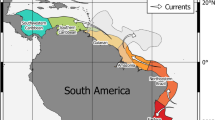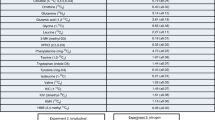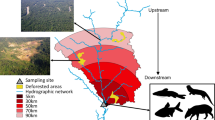Abstract
BURROWING apodan amphibians (order Gymnophiona) are relatively common in the Amazon River Basin of South America but the physiology of the group has been little studied. The animals are usually fossorial, living burrowed in the mud banks of small tributaries of the main river. The burrows, which they presumably dig, are small and conditions are often both hypoxic and hypercarbic. Animals 0.25–0.75 m long and weighing 100–600 g, found near the air–water interface, were dug out of the mud banks and immediately taken to the laboratory of the research vessel RV Alpha Helix for study. Several species of burrowing apodans occur in the area, but the most common is Typhlonectes compressicauda, the animal used in this study. We report here on the blood respiratory properties of this organism.
This is a preview of subscription content, access via your institution
Access options
Subscribe to this journal
Receive 51 print issues and online access
$199.00 per year
only $3.90 per issue
Buy this article
- Purchase on SpringerLink
- Instant access to full article PDF
Prices may be subject to local taxes which are calculated during checkout
Similar content being viewed by others
References
Edwards, M. J. & R. T. Martin J. appl. Physiol. 21, 1898–1902 (1967).
Manwell, C. A. Rev. Physiol. 22, 191–244 (1960).
Manwell, C. Physiol. Zool. 31, 39–100 (1958).
Riggs, A. J. gen. Physiol. 35, 23–40 (1951).
Author information
Authors and Affiliations
Rights and permissions
About this article
Cite this article
TOEWS, D., MACINTYRE, D. Blood respiratory properties of a viviparous amphibian. Nature 266, 464–465 (1977). https://doi.org/10.1038/266464a0
Received:
Accepted:
Published:
Issue date:
DOI: https://doi.org/10.1038/266464a0
This article is cited by
-
What lies beneath? Molecular evolution during the radiation of caecilian amphibians
BMC Genomics (2019)
-
A fetal-maternal shift of blood oxygen affinity in an Australian viviparous lizard,Sphenomorphus quoyii (Reptilia, scincidae)
Journal of Comparative Physiology ? B (1981)



